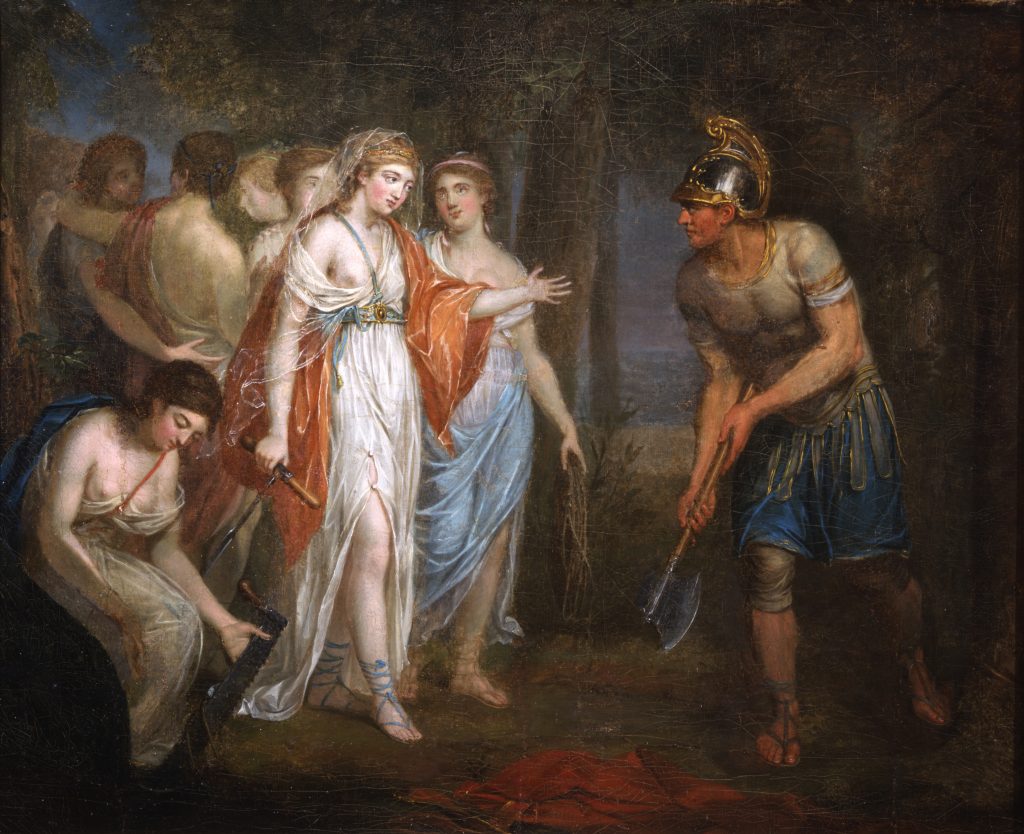James Madison Fellows Workshop, American Revolution Institute
Washington, D.C.
June 30, 2022
These collection items were selected for an afternoon workshop for the 2022 summer institute of the James Madison Fellows.
![Click for a larger view. Institution of the Society of the Cincinnati 1783 Archives [oversize]](https://www.americanrevolutioninstitute.org/wp-content/uploads/2018/08/Institution-of-the-Society-of-the-Cincinnati-1783-Archives-oversize-780x1024.jpg)
Click for a larger view.
The Institution of the Society of the Cincinnati
May 1783The Society of the Cincinnati Archives
Adopted at the founding meeting on May 13, 1783, the Institution remains the principle guiding document of the organization to the present day. The first official copy was inscribed on a large, irregularly shaped sheet of parchment and signed by George Washington and thirty-five other officers. The Institution lays out the tenets and organizational structure of the Society, the rules of eligibility to membership, the establishment of constituent branches and details of the Society’s insignia. To join the Society, the original members were required to sign their names to the Institution, thus pledging their allegiance to the immutable principles upon which the Society was founded.![Click for a larger view. Society of the Cincinnati diploma drawing 1783 Archives [oversize]](https://www.americanrevolutioninstitute.org/wp-content/uploads/2018/08/Society-of-the-Cincinnati-diploma-drawing-1783-Archives-oversize-1-1024x689.jpg)
Click for a larger view.Drawing of the diploma of the Society of the Cincinnati
Drawing of the diploma of the Society of the Cincinnati
Pierre-Charles L’Enfant
June 1783The Society of the Cincinnati Archives
Concerned that all members of the Society might not be able to afford to purchase an Eagle, L’Enfant also submitted this design for an elegant membership certificate, to be called the diploma. The imagery depicts America forcing Britannia away from its shores, with Fame heralding the achievement of American independence. The Society adopted the diploma and the Eagle as the official emblems of membership at its June 19, 1783, meeting.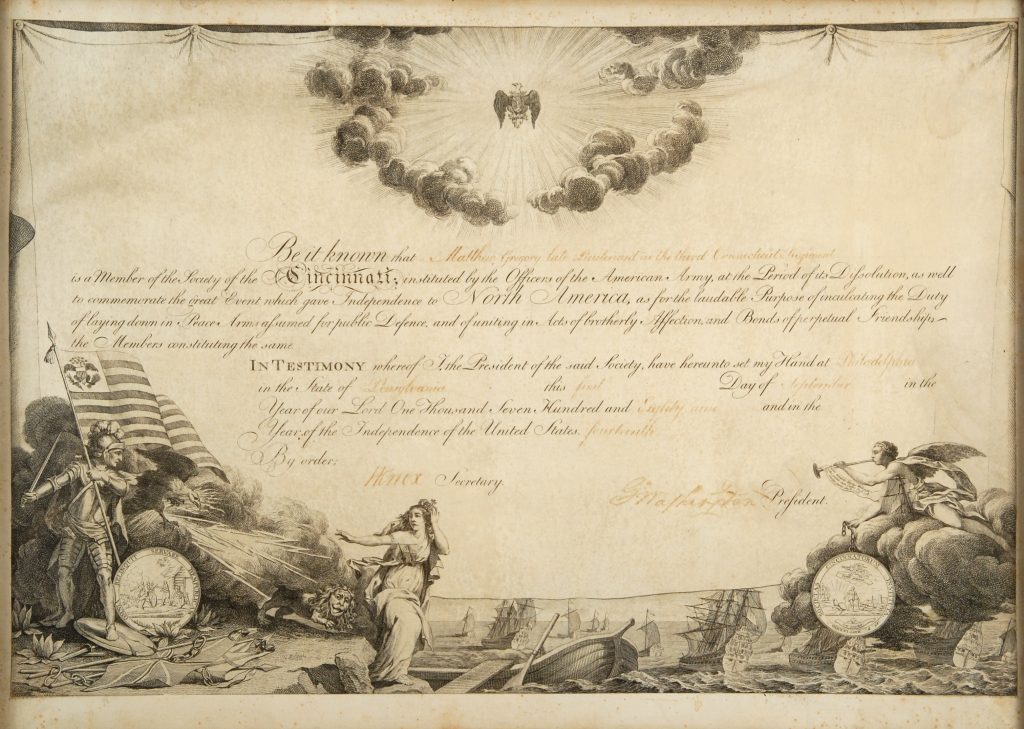
Click for a larger view.
Society of the Cincinnati diploma
September 1, 1789Gift of Mrs. Edward Correa, 1955
The imagery on this diploma is based on Pierre L’Enfant’s original sketch for the Society’s membership certificate. The medal featuring the story of Cincinnatus is in the lower left and right corners. This diploma belonged to Lt. Matthew Gregory, who served in the Third Connecticut Regiment, and is signed by Henry Knox and George Washington.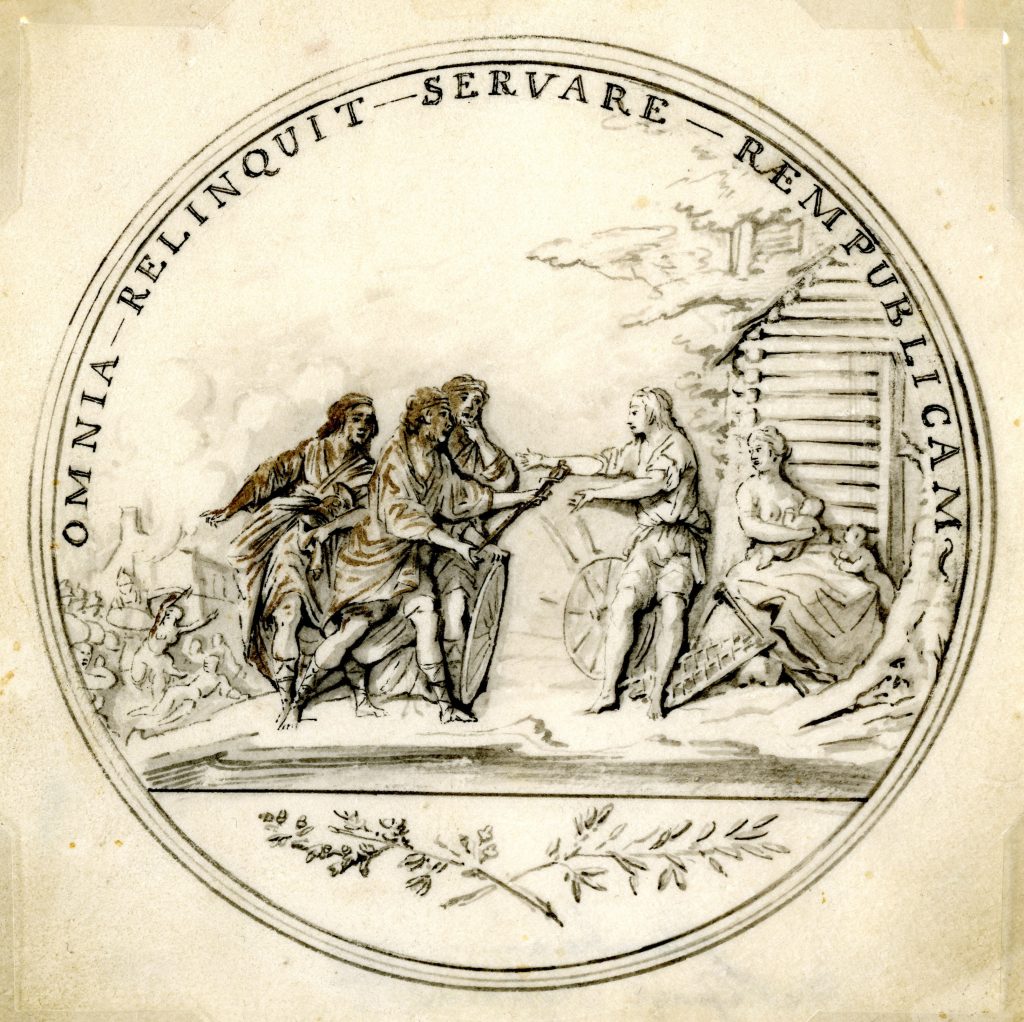
Click for a larger view.
Drawing of the Society of the Cincinnati medal
Pierre-Charles L’Enfant
June 1783The Society of the Cincinnati Archives
At the request of the Society, Pierre-Charles L’Enfant, a French volunteer in the Continental Army Corps of Engineers, drew a design for a medal bearing imagery of the life of the fifth-century BC Roman hero Cincinnatus, from whom the Society takes its name. The obverse, shown here, depicts Cincinnatus receiving his sword from Roman senators as he leaves home to lead his country against its enemies.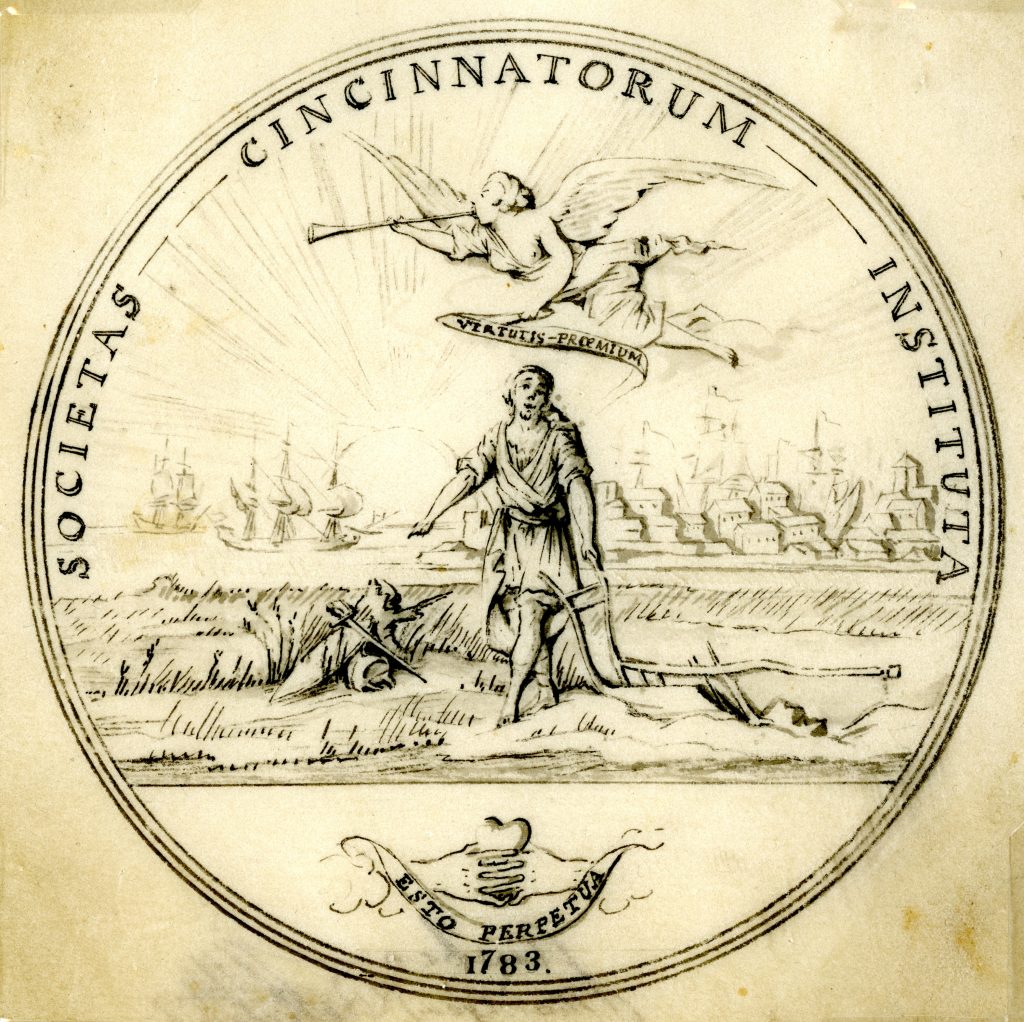
Click for a larger view.
Sketch for the Society of the Cincinnati medal, reverse
Pierre-Charles L’Enfant
June 1783The Society of the Cincinnati Archives
The reverse side of the medal shown in L’Enfant’s pen-and-ink drawing features the victorious Cincinnatus returned to his plow, with the figure of Fame flying over him holding a banner that reads “Virtutis Praemium.”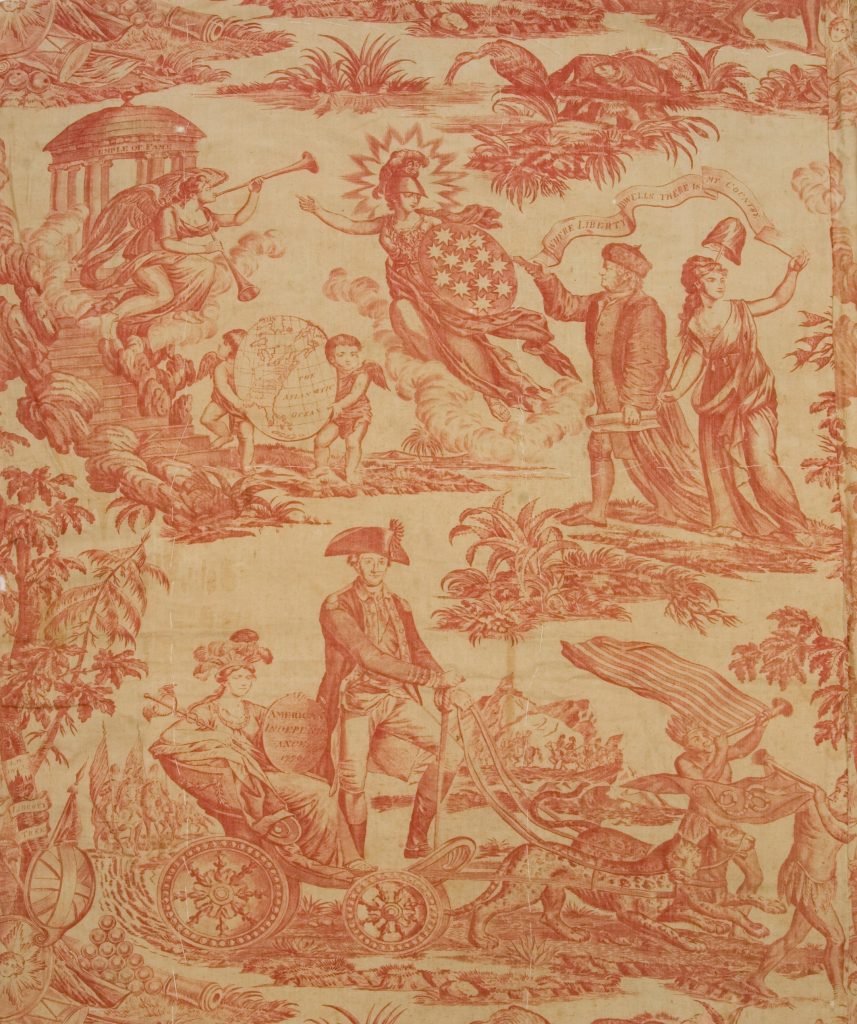
Click for a larger view.
"Washington and American Independance, The Apotheosis of Franklin" bed curtain
England, ca. 1785The Society of the Cincinnati
"Washington and American Independance, The Apotheosis of Franklin" (alternately known as "The Apotheosis of Franklin and Washington") is a copperplate-printed bed furnishing in red on white cotton or cotton-linen blend, made in England, ca. 1785. The pattern depicts George Washington in military uniform standing in a chariot alongside a seated female figure of America, who holds a caduceus in one hand and an oval plaque inscribed "AMERICAN / INDEPEND/ ANCE / 1776" in the other hand. The chariot is pulled by two leopards, which are flanked by two American Indians, one holding a thirteen-striped flag and the other a flag bearing a rattlesnake inscribed "Unite or Die" and cut into thirteen parts. Soldiers carrying striped flags descend from a mountain and follow the chariot. Behind the chariot is the (labeled) Liberty Tree, bearing an upside-down placard reading "Stamp Act." Above Washington, the pattern depicts Benjamin Franklin next to the personification of Liberty, and the two hold a banner inscribed "WHERE LIBERTY DWELLS THERE IS MY COUNTRY." On the other side of Franklin is the goddess Athena, carrying a shield with thirteen stars and pointing to the Temple of Fame, and two putti holding a globe showing America divided into Georgia, South Carolina, North Carolina, Virginia, Maryland, Pennsylvania, New Jersey, New York, and New England. The winged figure Fame holds two trumpets and flies in front of the temple. Above Franklin are a beaver and a heron with a fish in its mouth shown in a marsh. The textile may have originally been a bed curtain or bedspread, and may have been converted into a drape or hanging at a later date.